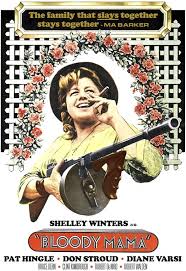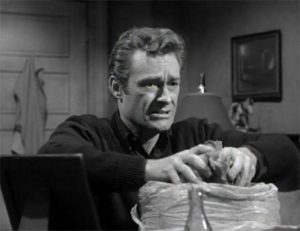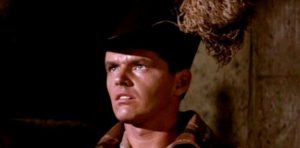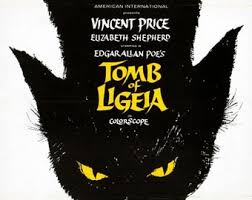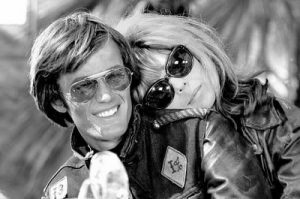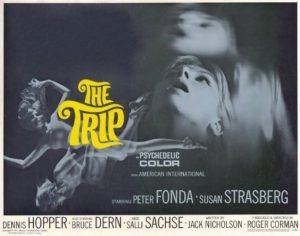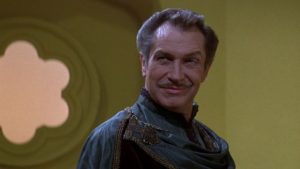
© Eon Productions
Another unwelcome reminder that I’m now old and decrepit… I’ve just discovered that 35 years ago today, on June 13th 1989, Licence to Kill opened at the Leicester Square Odeon in London. Time, I think, for a 35th-anniversary tribute to one of my favourite Bond movies.
Few events depress me more than when a film critic like Peter Bradshaw in the Guardian or Pete Travers in Rolling Stone, who knows nothing about James Bond and whose general opinions I don’t think much of either, decide it’s time to pen a feature ranking the Bond films from ‘best’ to ‘worst’. That invariably means that the 1989 movie Licence to Kill with Timothy Dalton playing Bond ends up near the bottom, held off the ‘worst’ spot only by 1985’s A View to a Kill. Bradshaw, Travers or whoever the no-nothing critic is will invariably damn Licence to Kill with such adjectives as ‘humourless’, ‘dour’, ‘violent’ and ‘misjudged’.
This was the film where Timothy Dalton and the Bond production team decided it was time to shake up the tried-and-tested formula of fantasy plots, over-the-top villains and unlikely action set-pieces and incorporate something more authentic. In fact, Licence to Kill is a trailblazer for the Bond films of the 21st century, when the series was rebooted into a darker, grittier and critically acclaimed form with Daniel Craig. But it rarely gets any credit for that.
Well, today, 35 years on, it’s time to stand up and be counted. I think Licence to Kill is a great Bond movie. When it appeared, I believed it was the best instalment in the series since the 1960s and I still regard it as being among the best half-dozen in the series’ 60-year history. That its critical reputation is tarnished is down to bad luck. It was unlucky in the reaction it got from fickle film critics who’d spent the previous two decades complaining that the Bond movies, during the tenure of Roger Moore, had become ‘too silly’ and had lost the ‘serious’ tone of the Ian Fleming books on which they were based. But the moment that Licence to Kill appeared, they wailed that it was ‘too serious’ and lamented the loss of the glorious silliness of good old Roger Moore.
Licence to Kill was unlucky too because, although it made a respectable profit outside the USA, the American takings were the lowest ever for a Bond movie. Despite what many think, this wasn’t a reflection of its quality, but the result of it being released at an inopportune time when cinemas were already crowded with Lethal Weapon 2, Batman and Indiana Jones and the Last Crusade (a film that coincidentally was choc-a-bloc with Bond alumni like John Rhys-Davies, Alison Doody, Julian Glover and the original 007 himself Sean Connery).
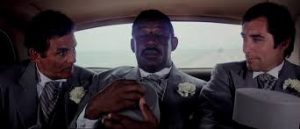
© Eon Productions
And it was unlucky to be the last movie before the great Bond hiatus of 1989 to 1995, during which no new Bond films were made due to a legal dispute between Danjaq, the franchise’s holding company, and Metro-Goldwyn-Mayer / United Artists. This gave people the false impression that Licence to Kill, and Timothy Dalton, had crocked the series for half-a-dozen years.
When I saw Licence to Kill 35 years ago, what impressed me first was that it had a plot. Not a tangle of subplots and diversions created because producer Cubby Broccoli and his writers wanted to fit in copious action and special-effects set-pieces involving, say, gondolas that turn into speedboats, and speedboats that turn into hang-gliders, and crashing cable cars, and Bond falling out of a plane without a parachute, and laser-gun shootouts in outer space, but a plot that moves smoothly from A to B and to C.
Licence to Kill begins with Bond being best man at the wedding of his CIA buddy Felix Leiter (David Hedison, who’d already played Leiter in 1974’s Live and Let Die). Leiter’s big day proves even more eventful than expected because he has to interrupt his nuptials to seize Latin American drug baron Franz Sanchez (Robert Davi). Sanchez has suddenly turned up on American soil in pursuit of his errant mistress Lupe (Talisa Soto) and her boyfriend – whose heart Sanchez cuts out before Leiter and the Feds clamp the cuffs on him.
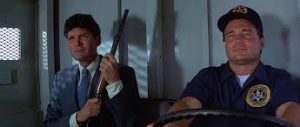
© Eon Productions
Felix gets married as planned, but things take a dark turn when Sanchez escapes from captivity, with the aid of crooked DEA agent Ed Killifer (Everett McGill). He and his henchmen turn up at the Leiters’ home on their wedding night to get revenge. Leiter’s new wife Della (Priscilla Barnes) is murdered – Sanchez’s number-one scumbag minion Dario, played by a very young Benicio Del Toro, crows at Leiter, “Don’t worry, we gave her a nice honeymoo-oon!” Leiter himself is dunked in a shark tank in a marine research centre in Key West, which is one of the fronts for Sanchez’s US drugs-smuggling operation. Later, Bond discovers Della’s dead body and Leiter’s just-about-alive one, minus a couple of limbs, and vows revenge.
Bond starts by investigating the marine-research lab and then Sanchez’s research vessel the Wavekrest – by this time Sanchez himself has returned to base, a fictional Latin American country called Isthmus. He tangles violently with Dario and Sanchez’s sleazy American lieutenant Milton Krest (Anthony Zerbe) and, gratifyingly, he drops Killifer and his suitcase of blood money into the shark tank that Leiter was maimed in. (“You earned it! You keep it!”)
Along the way, he finds an unexpected ally in the form of Pam Bouvier (Carey Lowell), an airplane pilot who’s been working for Leiter in some mysterious capacity, and incurs the wrath of his boss M (Robert Brown), who thinks he’s getting involved in matters that don’t concern him (“We’re not a country club, 007!”) and revokes his licence to kill. This was why the film had provisionally been titled Licence Revoked until, the story goes, research in the USA suggested that many Americans didn’t know what the word ‘revoked’ meant.
Now rogue, Bond steals a fortune in drugs money from the Wavekrest and uses it to fund a trip to Isthmus for him and Bouvier. There, he tries to assassinate Sanchez but fails and, in the process, unwittingly exposes a secret operation being run against Sanchez by agents from Hong Kong. This leaves Sanchez with the impression that the agents were the ones trying to assassinate him and Bond, by exposing them, is actually on his side. An unlikely bromance ensues and Sanchez, enamoured with Bond, tries to recruit him into his organisation.
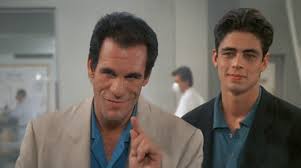
© Eon Productions
Aware that Sanchez is obsessed with loyalty, Bond starts planting doubts in Sanchez’s mind about the fidelity of his many henchmen who, in addition to those already mentioned, include his head of security Heller (Don Stroud) and his whizz-kid accountant Truman-Lodge (Anthony Starke). Time, though, is running short for Bond because the two members of Sanchez’s organisation who know his true identity are returning to Isthmus: Krest, on board the Wavekrest, and Dario, who’s coming by way of El Salvador, where he’s managed to procure some stinger missiles. Sanchez intends to use these to shoot down American aircraft in revenge for his recent incarceration.
What follows involves much mayhem and gruesome death – death by being doused in gasoline and set alight, by being blown apart in a decompression chamber, by being impaled on forklift-truck blades, by being fed into a cocaine-grinding machine. A lot of this is inflicted by a now-paranoid Sanchez on the people who work for him. Yes, Licence to Kill seems a million miles removed from the Roger Moore Bonds, where the most gruesome things were the inuendo-laden jokes cracked while Moore got intimate with ladies about half his age. But while the brutality here may shock someone accustomed to the escapist fantasises of the 1970s and 1980s Bond movies, I loved it.
This was the sort of Bond imagined by Ian Fleming, most of whose books I’d read before I saw any of the films. Not that Fleming ever wrote about 1980s Latin American drug dealers – his gangsters were of the James Cagney variety, with names like ‘Jack Spang’, ‘Sluggsy Morant’, ‘Sol Horowitz’, ‘Sam Binion’ and ‘Louie Paradise’. But Dalton nails it as the screen Bond who was closest to the character described by Fleming. Smooth and confident on the surface, but subtly troubled underneath, he does some bad stuff in the line of duty and hates having to do it. But even more, he hates the evil deeds – like the murderous violation of his best friend’s wedding – that compel him to do it.

© Eon Productions
Not that the film is unremittingly dark. It has some amusing lines and likeable performances. One thing that brings a smile to the face is the entry into the plot, halfway through, of Bond’s secret-service armourer Q, played by the venerable Desmond Llewellyn. Q takes some leave and nips over to Isthmus to help Bond and Bouvier out, bringing with him a cache of his famous gadgets. (“Everything for a man on holiday. Explosive alarm clock… Guaranteed never to wake up anyone who uses it. Dentonite toothpaste… To be used sparingly. The latest in plastic explosive.” “I could do with some plastic,” Bond notes.) After the Moore films, where Q’s main function was to be the butt of Bond’s jokes, it’s nice to see him with an expanded role and in a different dynamic with Bond. In Licence to Kill, the two men actually like, respect and care about each other.
Llewellyn, though, is just one player in a generally delightful cast. A 1980s / 1990s action-movie character actor, and nowadays a Sinatra-esque crooner, Robert Davi is excellent as Sanchez. He tempers sufficient quantities of rottenness with some unexpected integrity – for instance, he insists on honouring the deal he’s made with Killifer, even though his sidekicks urge him to take the easier option of whacking the guy. Some similarly distinguished character actors play the other villains: Zerbe, Stroud, McGill and, of course, Del Toro. Plus you get some familiar and welcome faces in smaller roles, including Frank McRae from 48 Hrs (1982) and The Last Action Hero (1993) and Cary-Hiroyuki Tagawa from the Mortal Combat franchise.
Also deserving praise is Carey Lowell. Just as Davi is the great overlooked Bond villain, Lowell is the great overlooked Bond girl. From the very beginning, when she shuts up the odious Dario by shoving a pump-action shotgun into his crotch, her Pam Bouvier character means business. Her gutsiness is immensely refreshing after so many Bond actresses in the 1970s and 1980s had been given roles that were wooden (Carole Bouquet), insipid (Jane Seymour) or just plain dumb (Jill St John, Britt Ekland, Tanya Roberts). It’s good too that she doesn’t just exist to follow Bond but has her own agenda. She plans to retrieve the stinger missiles before Sanchez does serious damage with them, a scheme for which she’s enlisted the help of the duplicitous Heller.
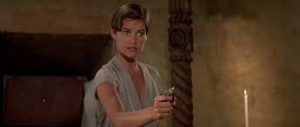
© Eon Productions
What else do I like about Licence to Kill? I like its references to Ian Fleming’s fiction. Milton Krest, the Wavekrest and Sanchez’s fondness for whipping Lupe with a stingray’s tail come from the 1960 short story The Hildebrand Rarity, while Leiter’s encounter with the shark is lifted from the 1954 novel Live and Let Die. I like how the secondary Bond girl, Talisa Soto’s Lupe, survives the film. The secondary Bond girl in many films, from Lana Wood’s Plenty O’Toole in Diamonds are Forever (1971) to Berenice Marlohe’s Severine in Skyfall (2012), ends up as a sacrificial lamb, killed to show how beastly the villains are.
And I like how the film is a spiritual sequel to perhaps the best-ever Bond movie, 1969’s On Her Majesty’s Secret Service, which ends with Bond getting married and then seeing his new wife Tracy murdered by his nemesis Ernst Stavro Blofeld. This is referenced in Licence to Kill by a moment when Bond becomes melancholic during Leiter’s wedding. “He was married once,” Leiter tells Della, “but that was a long time ago.” (When I saw the film in 1989 in a cinema in Aberdeen, someone in the row behind me declared: “Aye, an’ he looked like George Lazenby at the time!”) This suggests that later in the film Bond isn’t just avenging Leiter and Della, but Tracy too.
Licence to Kill isn’t perfect, though. There are a couple of longueurs. For a man who’s recently lost wife and limbs, David Hedison’s Leiter seems unfathomably cheerful when he reappears at the end. Maybe it’s the drugs they were feeding him at the hospital. And Carey Lowell’s Bouvier is ill-served by a scene where she encounters Lupe, finds out that she’s spent the night with Bond and reacts like a sulky, jealous schoolgirl. When Q diplomatically suggests that Bond only did it for the sake of the mission, she retorts: “Bullshit!”
Licence to Kill was, alas, Timothy Dalton’s final showing as Bond. When the franchise finally got going again with 1995’s Goldeneye, it was with the cuddlier Pierce Brosnan in the role. I like Brosnan, but always found his attempts to combine the physicality of Sean Connery with the smoothness of Roger Moore a little unconvincing. As I’ve said, Dalton strikes me as the actor who came closest to portraying Bond in the way Fleming had imagined him and, for me, there’s no higher accolade. He’s the connoisseur’s Bond.

© Eon Productions

